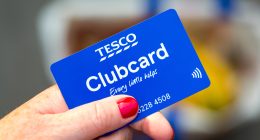Referral marketing is the fastest way to grow your business and get more people talking about your brand. Using a great referral program helps to build brand awareness and is the most trustworthy way by marketing your business to customers with shared interests and common goals. Referral marketing accelerates word-of-mouth recommendations by enabling customers to tell their friends about the brands they use while getting rewarded for doing so.

Referral marketing triggers your most influential source of media, your customers. Brands that run effective referral marketing programs have reported a 71% higher conversion rate, customers with nearly a 60% higher lifetime value and around a 70% faster rate at which referred leads convert into happy customers. Helping to generate highly qualified leads when customers tell their friends, family, and acquaintances about products or services they’ve used and love, the people they refer to are more likely to convert, purely based on the association.
What is Referral Marketing?
Referral marketing is an effective way to automate customer recommendations through rewards and incentives. A referral program encourages word-of-mouth marketing by rewarding or incentivising customers that spread the word about your business or products. Asking existing customers to recommend your business to their friends is one of the fastest ways to reach more qualified leads and grow your business. And with very little marketing effort on your part.
How to Run a Referral Program
A referral program offers an easy way for customers to refer new leads to brands and products that they know and use. And, formalizing word-of-mouth marketing using a customer referral program creates an automated way for businesses to incentivise and reward customers that recommend their brand to friends in their network.
Running a referral program is not nearly as complicated as one might think and starts with a clear plan and outcomes. Whether you want to grow your business, reach more customers or generate more sales, your referral program should be created with a specific goal. By setting your referral marketing objectives, you have a clearer idea of what type of referral program will help you to achieve these goals and how best to go about it.
Choose between running a single-sided or double-sided referral program and an outline of how the referral program will work, what the incentive and or reward will be and how rewards will be issued once your referrals start coming in.
Whether you are planning on developing an in-house referral program or building a no-code referral program using referral software, see our checklist to make sure you are running a referral program in the most effective way possible.
How to Run a Successful Referral Program
- Build and style your referral program to compliment your current brand identity and tone – if you don’t have the development resources to do this yourself, use one of the DAN recommended tools listed here.
- Make sure that the mechanism of your referral program supports your customers’ goals and encourages them to want to share the offer with their friends.
- Make it as easy as possible for existing customers to sign up and refer their friends on their preferred sharing channels of choice.
- Communicate clearly what customers are expected to do and what their friends will be required to do to receive their referral reward.
- Make your referral program easy to manage by integrating it with your CRM and other processes that are already implemented in your business.
- Market your referral program to get more users to join and start referring their friends by promoting it on as many platforms and marketing channels as possible.
- Encourage your users to keep referring to their friends with well-timed reminders and a “scoreboard” of how many friends they have referred.
- Update your users when one of their referrals signs up and thank them for their referral.
- Keep track of who referred who and who needs to be rewarded, being certain that users receive their rewards as promised, and on time.
- Learn from past success stories whether these are your own or other brands that have run referral programs and have published case studies and best practices on what works well and what doesn’t.
- If at first, you don’t succeed, try and try again. The best way to learn what works for your customer and your business is to keep trying. From the reward to the value and the referral tools you use; (referral) practice makes perfect.
What’s the Difference Between Referral Marketing and Affiliate Marketing?
So now that we know what referral marketing is and what it takes to run a successful referral program, let us understand more about affiliate marketing and how it’s different.
Both referral marketing and affiliate marketing make use of an incentive and reward strategy to generate new customer leads and grow revenue. But the key difference between the two is that affiliate marketing relies on 3rd party advocates to encourage new customer leads. Referral marketing rewards existing customers for referring their friends to brands and products they already use.
- Referral Marketing relies on the relationship between a business and its customers and leverages that relationship as a catalyst to get customers to refer their friends to try the brand too. Referral marketing success will be largely determined by how many customers choose to join and refer their friends based on the appeal of the incentive, the reward and how loyal they are to the brand.
- Affiliate marketing put in place a paid-for agreement between a brand and an affiliate and what has been arranged as part of a paid-for–performance-based contract. Affiliate marketing success will be determined by the reach of the affiliate’s network and the influence they have on their followers.
While referral marketing and affiliate marketing share some similarities, key differences between the two are determined by the source of the referral. And, choosing between referral marketing or affiliate marketing to grow your business really boils down to how you want to reach new customers?
Referral marketing is managed by your internal growth, sales or marketing team, already familiar with a brand’s identity, and tone and with a pre-established relationship with a customer’s base. In contrast, because affiliate marketing involves a 3rd party to promote a brand, affiliate marketing sits somewhat outside the control of a business, placing the message, tone, and sales pitch in the hands of the advocate.
Referral marketing relies on the influence that an existing, happy customer has over their friends and acquaintances and the value of the reward or incentive offered to either (or both) parties. Referral marketing is especially effective when brands have an established and loyal customer base and the reward on offer is highly sought after.
Affiliate marketing is a contractual or paid-for agreement between a brand and an advocate. Because the advocate is considered a trustworthy and reliable source of influence within their network, affiliate marketing is a well-pitched solution for brands looking to establish a new customer base or grow one that has stagnated.
What Does It Take to Make a Great Referral Program?
With all of the evidence pointing toward the many reasons why every business in the world should be using referral marketing to grow, how can you make sure you’re running the best referral program for your business? How do brands differentiate their referral program from their competitors? What factors set one referral program apart from others and what do you need to know to fast-track your referral marketing success?
The answer is simple… learn from the best. We’ve all heard of the referral marketing unicorns run by Tesla, Paypal, and Dropbox but let’s take a quick look at why these referral programs were so successful and how you can learn from them too.
Best Referral Marketing Examples from Popular Brands
Tesla

Running a similar model to the same referral marketing success they created for PayPal, Tesla literally gave away money to make money. Offering $1000 for every successful referral, Tesla also offered access to exclusive events, and a “founder series” Model X.
Here’s why the Tesla referral program worked:
- Tesla gave $1000 to Tesla owners for referring a friend that followed through to purchase a Model S.
- Their friends would also get $1000 when they made their purchase.
Tesla further incentivized their referral program by upping the stakes;
- For 5 successful referrals and fans would get an invite to the Gigafactory grand opening party.
- For 10 referrals and fans get the right to purchase a special “founder series” Model X
PayPal

When PayPal first launched, they ran a referral program that turned out to be so successful they had to relook the value of their reward, not once but twice in order to keep up with the growth. The original PayPal referral program started as a double-sided reward system that rewarded users $20 for signing up for their service and an additional $20 to anyone else that new users referred. A referral program that would go one to acquire PayPal 100 million users, they had to reduce the original referral reward to $10 and later to $5 rewards. The results were so good that PayPal reported a growth rate between 7% and 10%.
DropBox

Learning from the same referral success that PayPal experienced, DropBox also ran a double-sided referral program aimed at rewarding both the user and friends that they referred to when signing up for their free cloud storage.
Here’s how the referral program worked:
- A new user signs up to DropBox and is invited to refer their friends to receive more data storage.
- If the user referred a friend they would receive an additional 500MB of cloud storage.
- If the friend that they referred signed up, they too would receive an additional 500MB of free cloud storage.
Users could go on to refer to as many friends as they liked until their cloud storage reached a threshold of 16GB per user.
The viral DropBox referral program helped this new cloud storage business achieve:
- Growth from 100k Users in Sept 2008 to 4 million users by Dec 2009
- 3900% growth in 15 months
- Doubled their user base every 3 months for 15 months
Closing
It’s safe to say that some of the fastest-growing brands in the world are making use of referral marketing to reach more customers and grow their revenue. And with a selection of referral software tools to choose from, referral marketing is one of the most cost-effective ways to reduce the cost of customer acquisition, increase the lifetime value of your existing customers and create instant trust with new leads.
If you haven’t thought about starting your own referral program yet, now’s the time to ask yourself why? And with easy-to-use referral software such as Referral Factory to get your referral program up and running in minutes, maybe you should ask yourself, if not now, then when?









